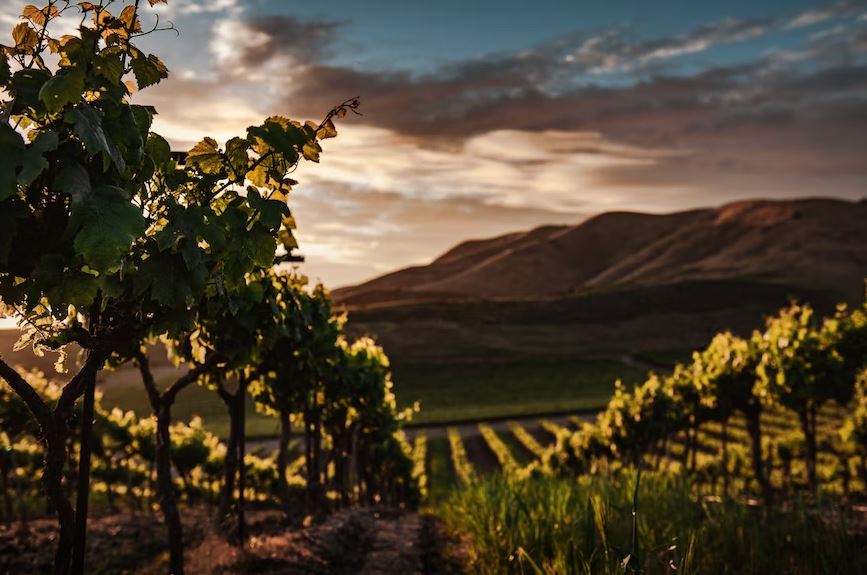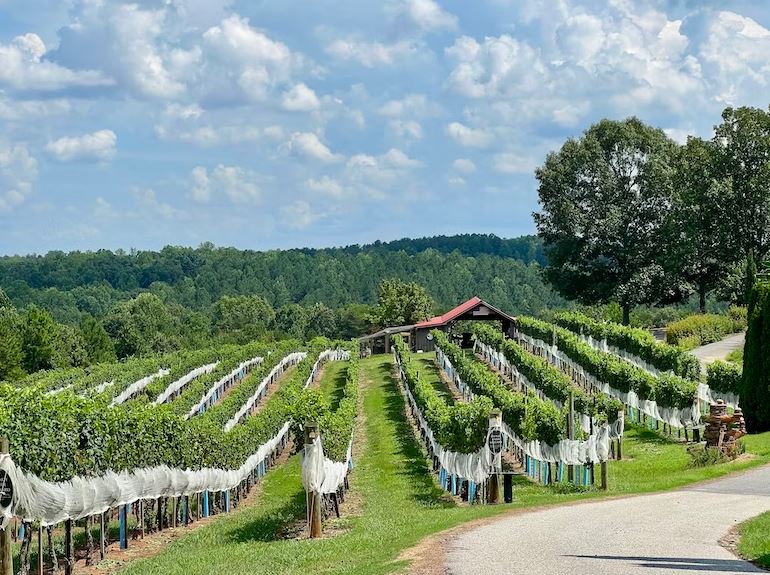Vine growers will always have one important factor to consider when planning to produce wine, the critical element of climate. Climate plays a crucial role in distinguishing the distribution, phenology, fruit quality, disease, pest incidence, and overall productivity of fruit-bearing plants of perennial fruit vines such as grapes.
Climatic factors such as temperature, precipitation, seasonality, day length, humidity, and the effects of climate change have a significant impact on fruit crop success and productivity. The world of winemaking has changed dramatically as the effects of climate change have become more acute. Understanding these interrelationships and implementing appropriate management practices is essential for sustainable and resilient fruit production.
Types of Climate for Fruit Production
Sufficient sun, heat, and water during the growing season and adequate cold during dormancy are essential for healthy vine growth and the production of top-quality grapes. Grapes grow best in climates with long warm summers and wet winters. Warm weather conditions during the growing season allow the vines to flower, bear fruit, and mature. Here are the typical climate conditions for different fruit productions to better understand.
1. Tropical Climate
High temperatures and abundant yearly rainfall characterize the tropical climate. Suitable for fruits such as coconut, durian, lychee, and passion fruit. These fruits require constant warm temperatures, high humidity, and regular rainfall.
2. Temperate Climate

Temperate climates have moderate temperatures and distinct seasons, including a cold winter and a warm summer. They are suitable for apples, pears, cherries, peaches, plums, and berries (strawberries and blueberries). These fruits require a certain number of chilling hours during winter for proper dormancy and subsequent fruit development.
3. Desert Climate
A desert climate is characterized by extreme heat, low humidity, and little precipitation. Harsh weather conditions make it difficult to grow fruit, but some fruits, such as dates and certain types of citrus (such as desert limes), can grow well in desert areas. These fruits require efficient irrigation systems and protection from extreme heat.
4. Subtropical Climate
The subtropical climate is characterized by hot, humid summers and mild winters. Suitable for fruits such as mango, avocado, pineapple, papaya, and banana. These fruits require a long, warm growing season, with temperatures rarely dropping below freezing.
5. Mediterranean Climate
The Mediterranean weather is characterized by mild, wet winters and hot, dry summers. The climate is suitable for growing various fruits, such as citrus (oranges, lemons, grapefruit, etc.), olives, figs, and grapes. These fruits require warm temperatures, low humidity, and moderate rainfall. Due to the warmer temperatures, wines from Mediterranean climates tend to be fuller, with lower acidity, higher alcohol content, and riper tannins and fruit.
Best Climate Condition for Grape Production

Grapes grow best in climates with long warm summers and wet winters. The best climates for growing grapes are usually temperate climates with specific conditions that favor optimum grape ripening. The warm temperature during the growing season allows the vines to flower, bear fruit, and mature. Different grape varieties have different preferred temperatures, but some general characteristics favor vineyard cultivation.
There are many factors to consider, but some generalizations can be made about grape climate and how it affects wine. Cooler climates tend to produce fresher, more elegant wines, as cooler temperatures preserve acidity and lengthen the growing season for better flavor and tannin development. On the other hand, warmer to hotter temperatures allow for more sunshine, which develops ripe tannins and fruit flavors and higher sugar content, resulting in wines with higher alcohol content.
Climate is also an important factor in terms of increasing the yield of grapes in a vineyard. With this, how many grapes do you think are needed to produce a bottle of wine? If you are also curious, check out our article, How Many Grapes Does It Take to Make a Single Bottle of Wine? for answers.
The most important factors to consider are:
1.Temperature
Grapes grow well in regions with moderate temperatures. Ideally, the average temperature during the growing season should be between 15°C (59°F) and 20°C (68°F). Warm temperatures allow the grapes to ripen fully, while cool nights preserve acidity and create complex aromas.
2. Sunlight
Sufficient sunlight is crucial for grapevine photosynthesis and fruit development. A sunny climate with long, sunny days helps the grapes accumulate sugars, leading to higher sugar levels and better flavors in the final wine.
3. Rainfall
Grapes need water to grow, but too much rain can be detrimental as it can dilute the flavor and increase the risk of fungal diseases. A climate with a well-defined dry season during maturity, usually during harvest, is desirable. Controlled irrigation systems are often used to meet water demands in areas with low rainfall.
4. Soil
Wine grapes grow in well-drained, water-retaining soils. Different types of soil, such as loam, clay, or gravel, may be suitable depending on the grape variety. Different soils give the grapes unique characteristics and create a unique terroir for the wine.
5. Altitude
Vineyards at higher elevations often have favorable climatic conditions for growing grapes. Altitude can affect air temperature, sun intensity, and diurnal temperature variation.
6. Seasonality
Most fruit crops have specific seasonal requirements. They rely on seasonal changes to progress through growth stages such as flowering, fruiting, maturation, and dormancy. Certain fruits, such as apples and strawberries, require periods of low temperatures (winter cold) to break dormancy and begin flowering. The length and intensity of the season directly affect fruit development and quality. There are also grape varieties that are very rare to find, such as the Ghost Grape. Find out more about it in our article, What is Pignolo, the Ghost Grape?
Conclusion
The climate determines viticulture practices. Collecting long-term climatic records for a particular location to decide whether to plant a vineyard, determine row orientation, and select appropriate varietals and potential wine products is essential for all wine producers. Also, long-term weather data can help growers better understand trends and adapt different vineyard management practices depending on the climate conditions.

